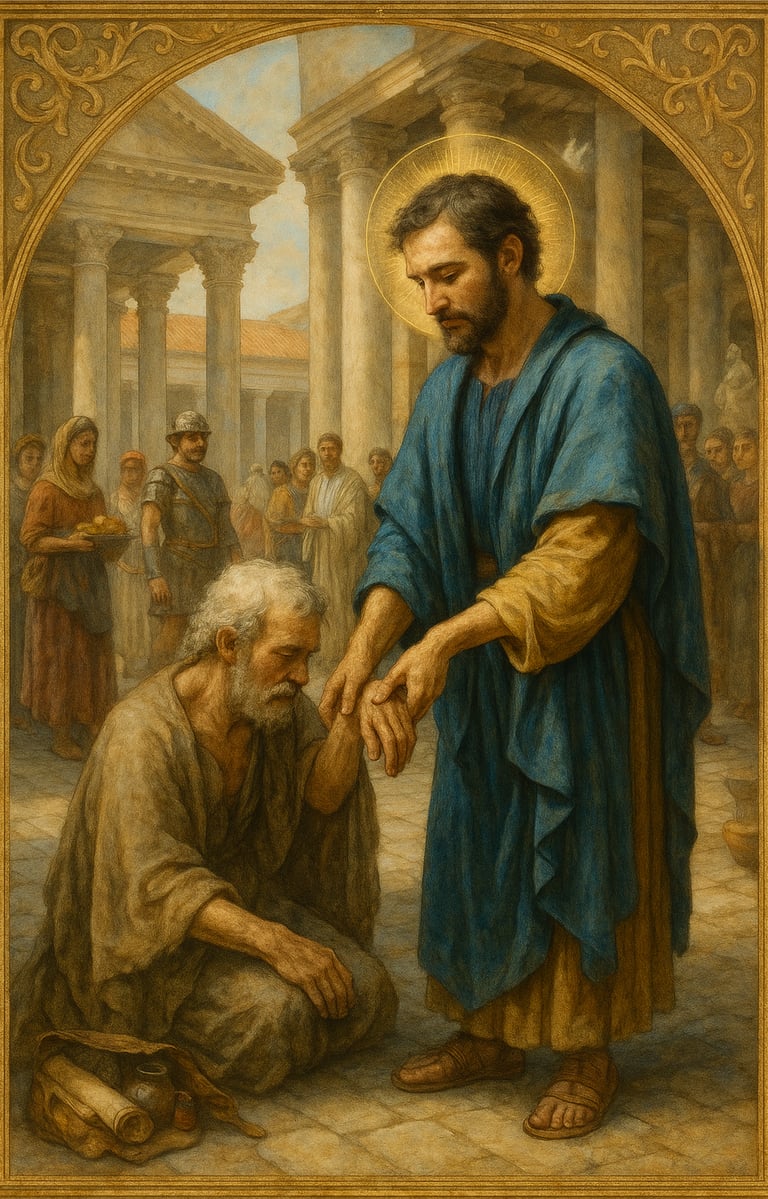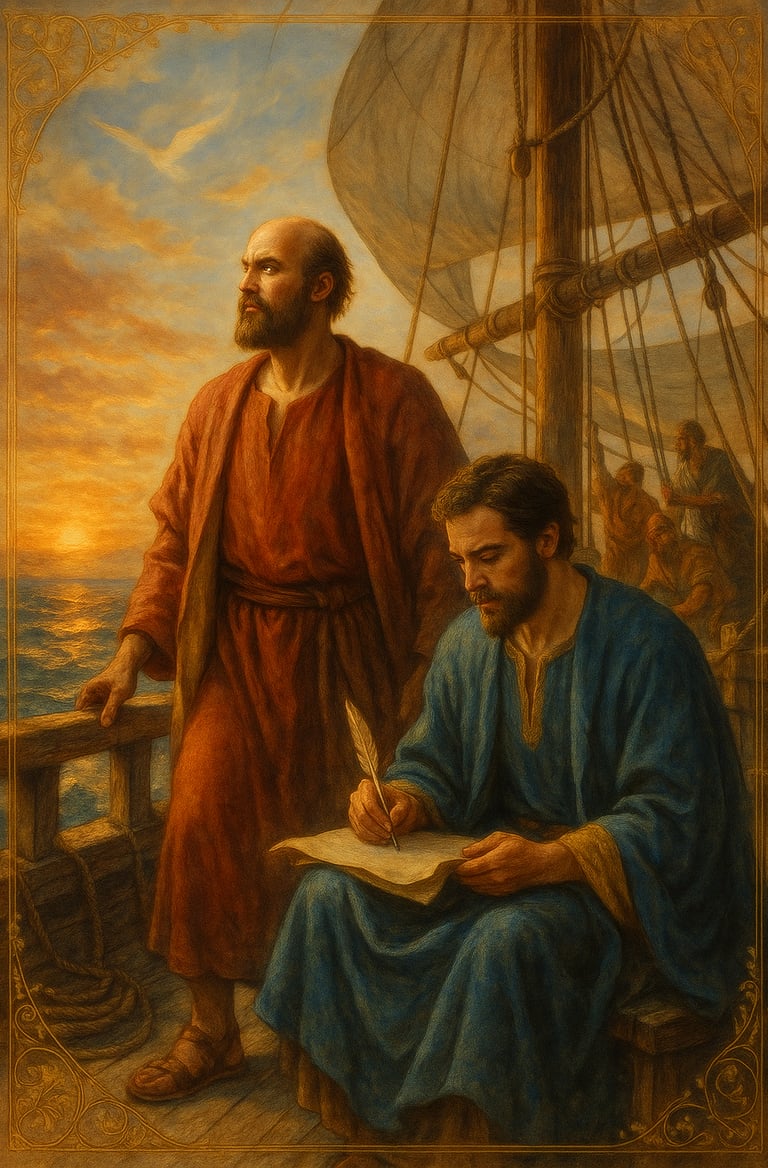Saint Luke the Evangelist – The Physician Who Painted the Gospel with Mercy
Feast Day: October 18 | Patronage: Artists, physicians, surgeons, notaries, butchers
Halo & Light Studios
10/18/20253 min read


Click Link for a reel of Daily Dose of Saints and Faithful Art:
https://youtube.com/shorts/1cOc-BILv-g
Saint Luke, the writer of the third Gospel and the Acts of the Apostles, was a Gentile born in Antioch, Syria. Trained as a physician, he was both meticulous in observation and tender in compassion — qualities that shaped his portrait of Christ as the Divine Healer. He was not one of the Twelve Apostles but a disciple who journeyed with Saint Paul on his missionary travels. Paul affectionately calls him “the beloved physician” (Colossians 4:14), noting that Luke remained at his side even in prison when others had fled.
Through his eyes, we glimpse the Gospel’s heart of mercy. Only Luke records the Annunciation, the Visitation, the Nativity, and beloved parables like the Good Samaritan and the Prodigal Son. He shows Jesus touching the leper, dining with sinners, and forgiving those forgotten by society. His Gospel is the story of salvation reaching every soul.
Luke wrote during the first century when Christianity was spreading beyond Judea into the Gentile world. The Roman Empire was vast, multilingual, and often hostile to this new faith. Yet amid persecution and cultural division, Luke’s writings built a bridge between Jew and Greek, faith and reason.
His Gospel, addressed to Theophilus — “lover of God” — was not merely for one man but for every seeker of truth. In the Acts of the Apostles, Luke chronicled the explosive birth of the Church: the descent of the Holy Spirit, the missionary zeal of Peter and Paul, and the endurance of faith under Roman oppression.
During this same era, Roman medicine flourished with figures like Galen and Hippocrates influencing the healing arts. Luke’s dual identity as doctor and disciple reflected a harmony between classical knowledge and divine revelation — a testament that faith perfects, not rejects, human wisdom.
According to ancient Christian tradition, Luke was also the first iconographer. He is said to have painted an image of the Virgin Mary holding the Christ Child — a work that inspired generations of Byzantine iconography. Whether legend or fact, the story reveals how Luke’s artistry went beyond the pen; he captured in form and color the tender humanity of God made flesh.
Artists and physicians alike invoke him as patron because he unites science and beauty under the light of faith. His Gospel paints the divine story: a world once shadowed by sin now illuminated by mercy.
Luke’s Gospel is sometimes called the Gospel of the Poor and the Gospel of Women. His attention to Mary, Elizabeth, Anna, Martha, and Mary Magdalene demonstrates his reverence for the feminine heart of faith. He shows the Kingdom of God as a feast where the lost, the humble, and the weary find a seat of honor.
In Luke’s narrative, salvation is not an abstract idea but an encounter — Christ bending close to the wounded. His writings reveal that healing and holiness are intertwined; the doctor’s art and the evangelist’s word serve the same Divine Physician.
Tradition holds that Luke lived to the age of eighty-four and was martyred in Boeotia, Greece. His relics were later transferred to Constantinople and finally to Padua, Italy. Today, his symbol — the winged ox — adorns church mosaics and manuscripts, representing sacrifice and strength in service of the Gospel.
The legacy of Luke endures in every Christian artist, every healer, and every believer who seeks to tell the story of mercy through their own craft.
“For the Son of Man came to seek and to save what was lost.”
— Luke 19:10
Saint Luke reminds us that our professions, talents, and intellects are not separate from our faith — they are its instruments. Whether we heal bodies, paint beauty, or write truth, we too can become storytellers of God’s compassion.


